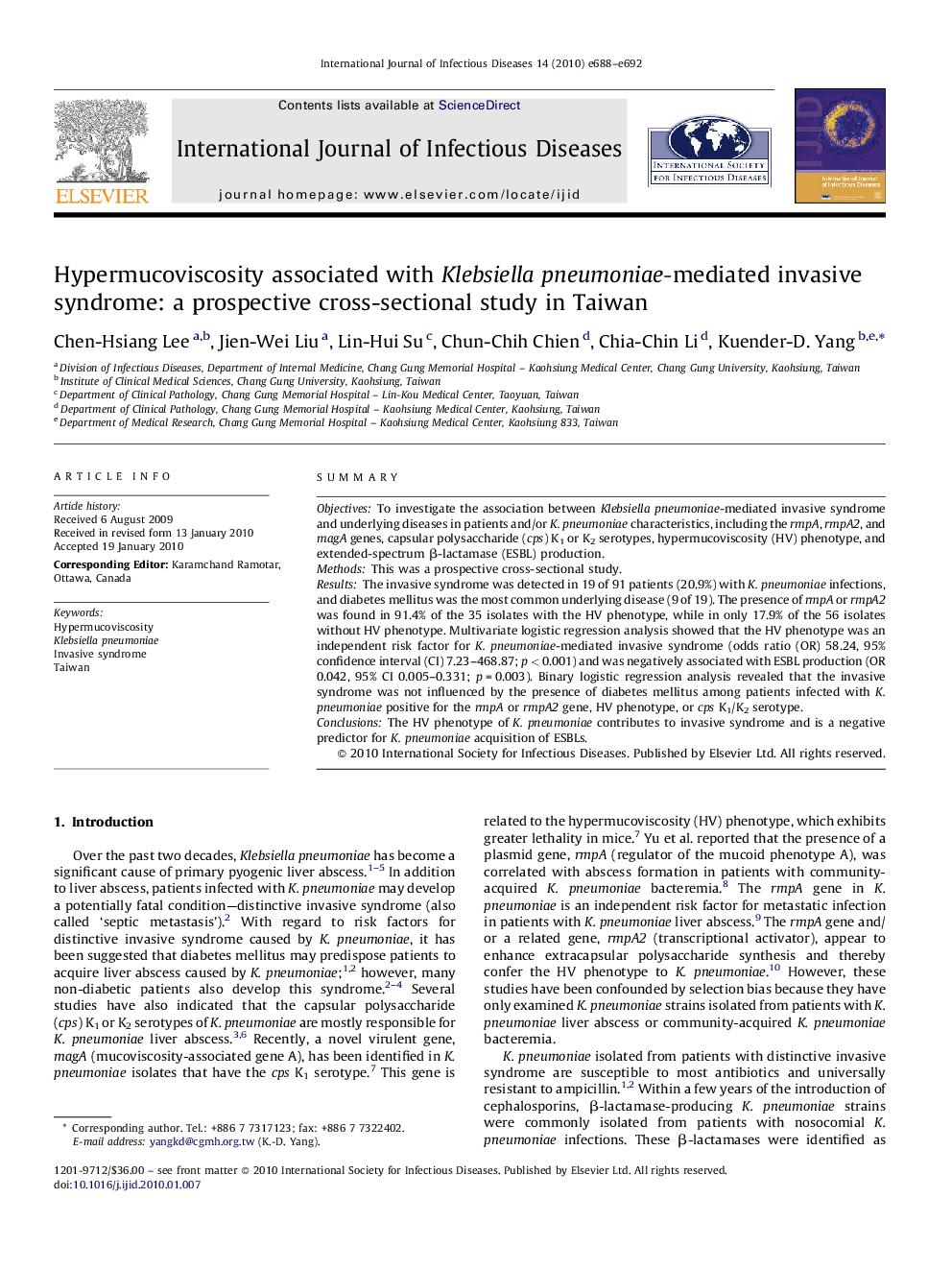| Article ID | Journal | Published Year | Pages | File Type |
|---|---|---|---|---|
| 3363245 | International Journal of Infectious Diseases | 2010 | 5 Pages |
SummaryObjectivesTo investigate the association between Klebsiella pneumoniae-mediated invasive syndrome and underlying diseases in patients and/or K. pneumoniae characteristics, including the rmpA, rmpA2, and magA genes, capsular polysaccharide (cps) K1 or K2 serotypes, hypermucoviscosity (HV) phenotype, and extended-spectrum β-lactamase (ESBL) production.MethodsThis was a prospective cross-sectional study.ResultsThe invasive syndrome was detected in 19 of 91 patients (20.9%) with K. pneumoniae infections, and diabetes mellitus was the most common underlying disease (9 of 19). The presence of rmpA or rmpA2 was found in 91.4% of the 35 isolates with the HV phenotype, while in only 17.9% of the 56 isolates without HV phenotype. Multivariate logistic regression analysis showed that the HV phenotype was an independent risk factor for K. pneumoniae-mediated invasive syndrome (odds ratio (OR) 58.24, 95% confidence interval (CI) 7.23–468.87; p < 0.001) and was negatively associated with ESBL production (OR 0.042, 95% CI 0.005–0.331; p = 0.003). Binary logistic regression analysis revealed that the invasive syndrome was not influenced by the presence of diabetes mellitus among patients infected with K. pneumoniae positive for the rmpA or rmpA2 gene, HV phenotype, or cps K1/K2 serotype.ConclusionsThe HV phenotype of K. pneumoniae contributes to invasive syndrome and is a negative predictor for K. pneumoniae acquisition of ESBLs.
